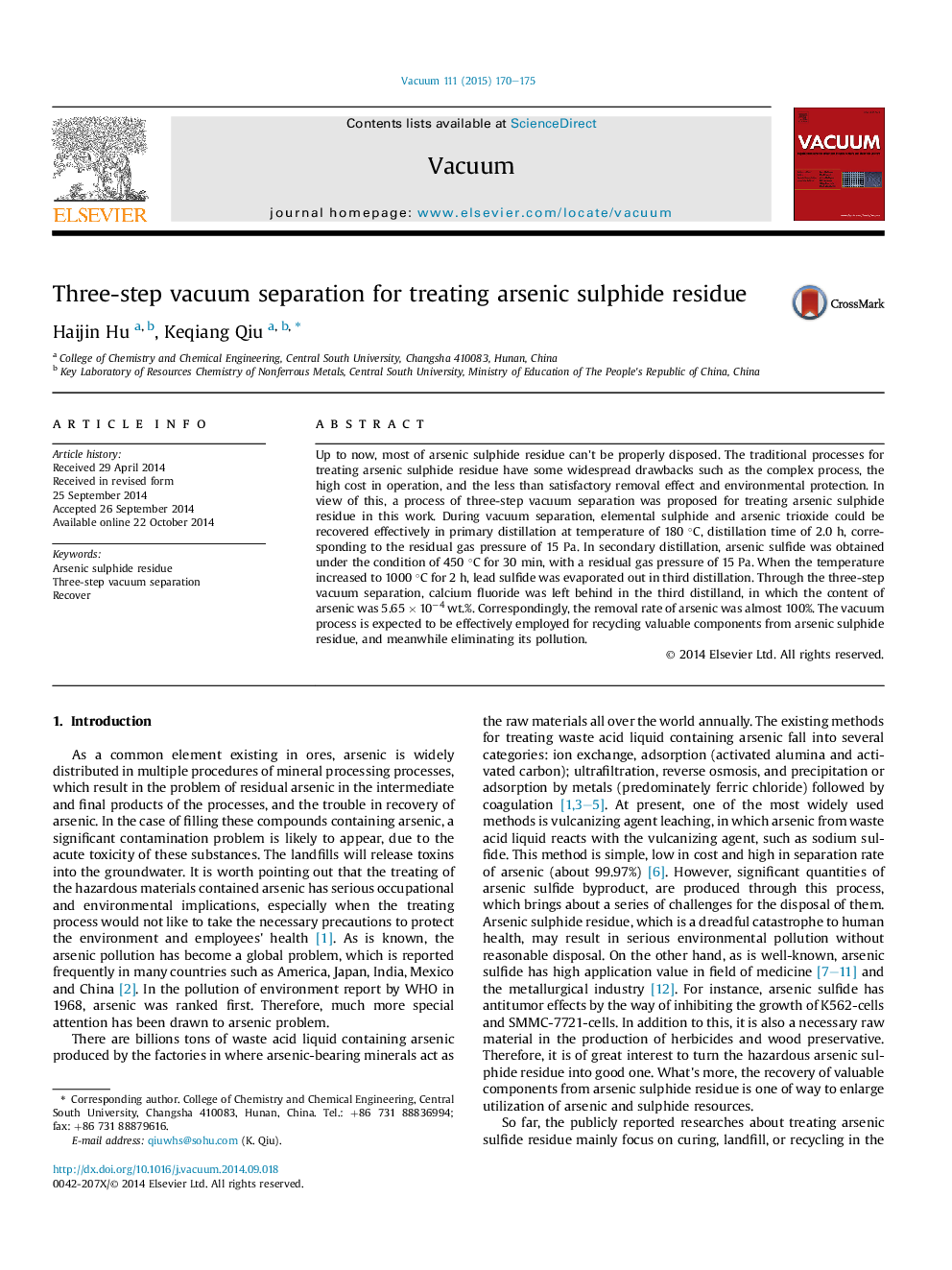| کد مقاله | کد نشریه | سال انتشار | مقاله انگلیسی | نسخه تمام متن |
|---|---|---|---|---|
| 1688338 | 1518958 | 2015 | 6 صفحه PDF | دانلود رایگان |
• Three-step vacuum distillation was employed for treating arsenic sulphide residue.
• S8 and As2O3, arsenic sulfide, PbS were evaporated out as distillate respectively.
• CaF2 was left behind as the third distilland after three-step vacuum distillation.
• Almost 100 wt.% of arsenic can be removed from arsenic sulphide residue.
Up to now, most of arsenic sulphide residue can't be properly disposed. The traditional processes for treating arsenic sulphide residue have some widespread drawbacks such as the complex process, the high cost in operation, and the less than satisfactory removal effect and environmental protection. In view of this, a process of three-step vacuum separation was proposed for treating arsenic sulphide residue in this work. During vacuum separation, elemental sulphide and arsenic trioxide could be recovered effectively in primary distillation at temperature of 180 °C, distillation time of 2.0 h, corresponding to the residual gas pressure of 15 Pa. In secondary distillation, arsenic sulfide was obtained under the condition of 450 °C for 30 min, with a residual gas pressure of 15 Pa. When the temperature increased to 1000 °C for 2 h, lead sulfide was evaporated out in third distillation. Through the three-step vacuum separation, calcium fluoride was left behind in the third distilland, in which the content of arsenic was 5.65 × 10−4 wt.%. Correspondingly, the removal rate of arsenic was almost 100%. The vacuum process is expected to be effectively employed for recycling valuable components from arsenic sulphide residue, and meanwhile eliminating its pollution.
Journal: Vacuum - Volume 111, January 2015, Pages 170–175
